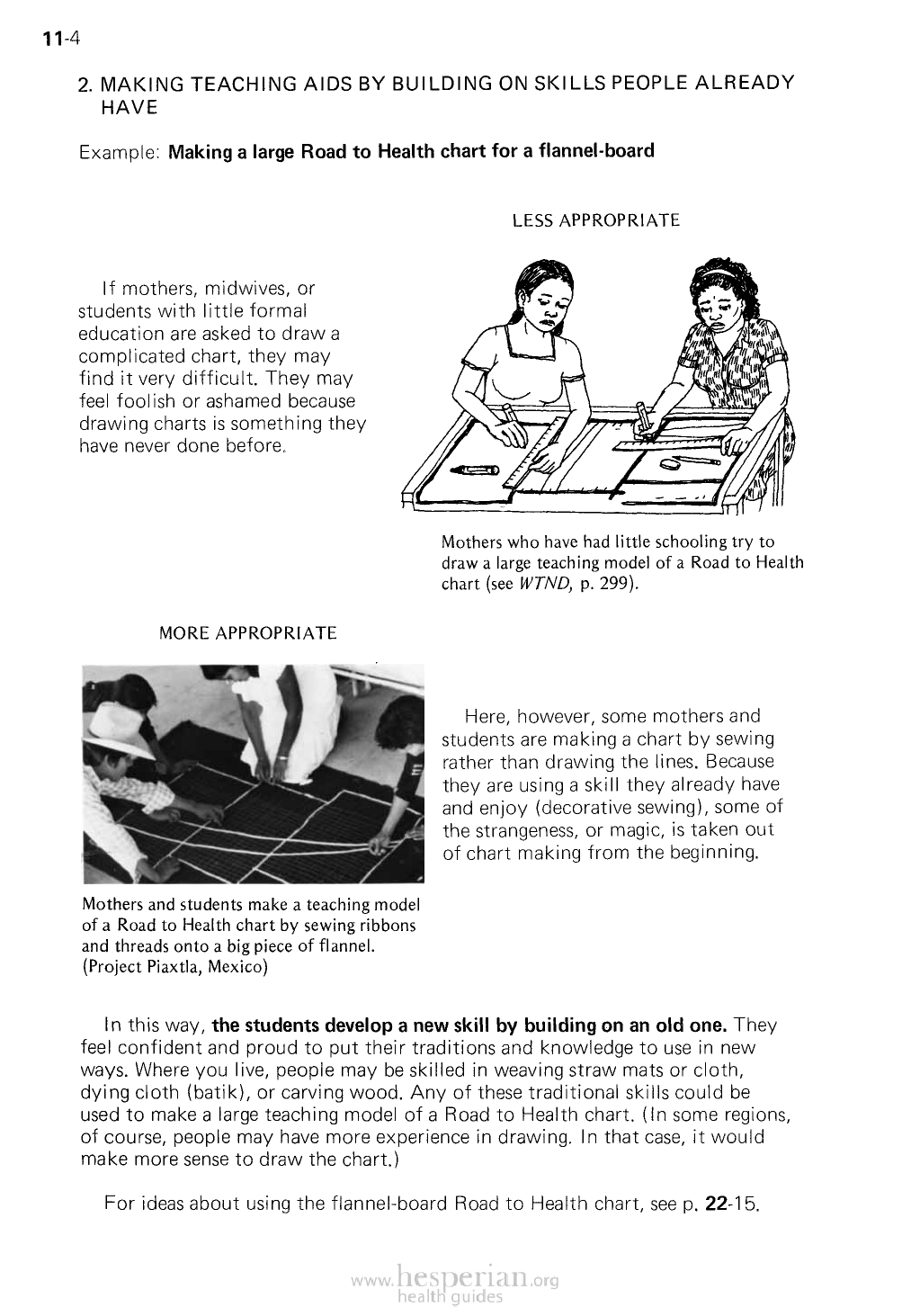
11-4
2. MAKING TEACHING AIDS BY BUILDING ON SKILLS PEOPLE ALREADY
HAVE
Example: Making a large Road to Health chart for a flannel board
If mothers, midwives, or
students with little formal
education are asked to draw a
complicated chart, they may
find it very difficult. They may
feel foolish or ashamed because
drawing charts is something they
have never done before.
LESS APPROPRIATE
MORE APPROPRIATE
Mothers who have had Mule schooling try to draw
a large teaching model of a Road to Health chart
(see WTND, p. 299).
Here, however, some mothers and
students are making a chart by sewing
rather than drawing the lines. Because
they are using a skill they already have
and enjoy (decorative sewing), some of
the strangeness, or magic, is taken out
of chart making from the beginning.
Mothers and students make a teaching model
of a Road to Health chart by sewing ribbons
and threads onto a big piece of flannel.
(Project Piaxtla, Mexico)
In this way, the students develop a new skill by building on an old one. They
feel confident and proud to put their traditions and knowledge to use in new ways.
Where you live, people may be skilled in weaving straw mats or cloth, dying cloth
(batik), or carving wood. Any of these traditional skills could be used to make a large
teaching model of a Road to Health chart. (In some regions, of course, people may
have more experience in drawing. In that case, it would make more sense to draw
the chart.)
For ideas about using the flannel-board Road to Health chart, see p. 22-15.